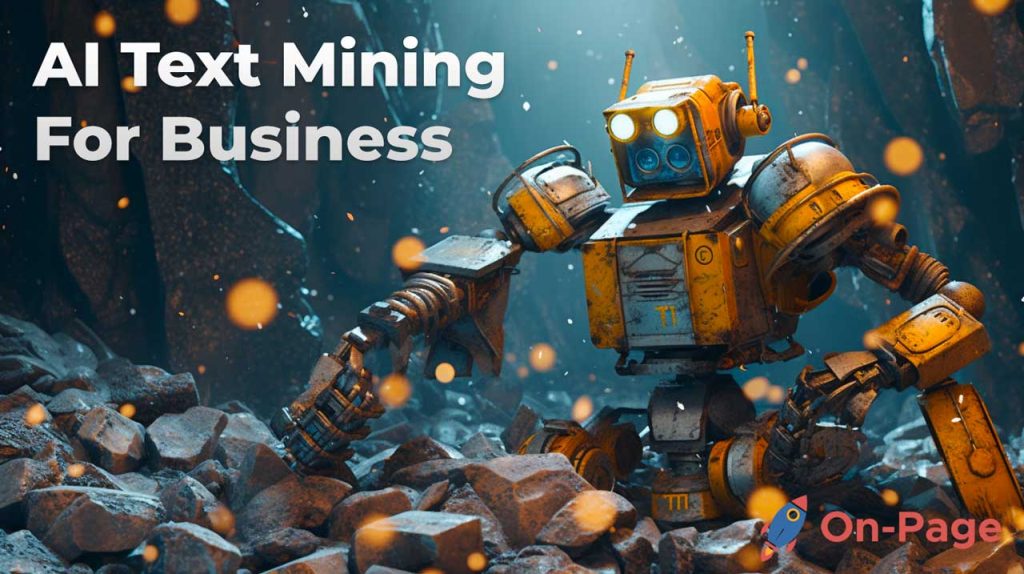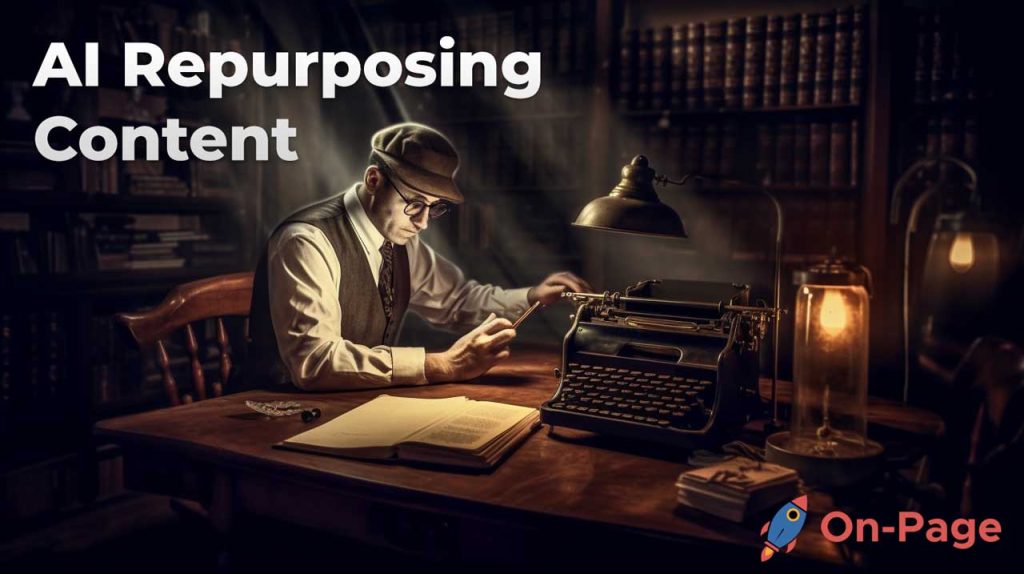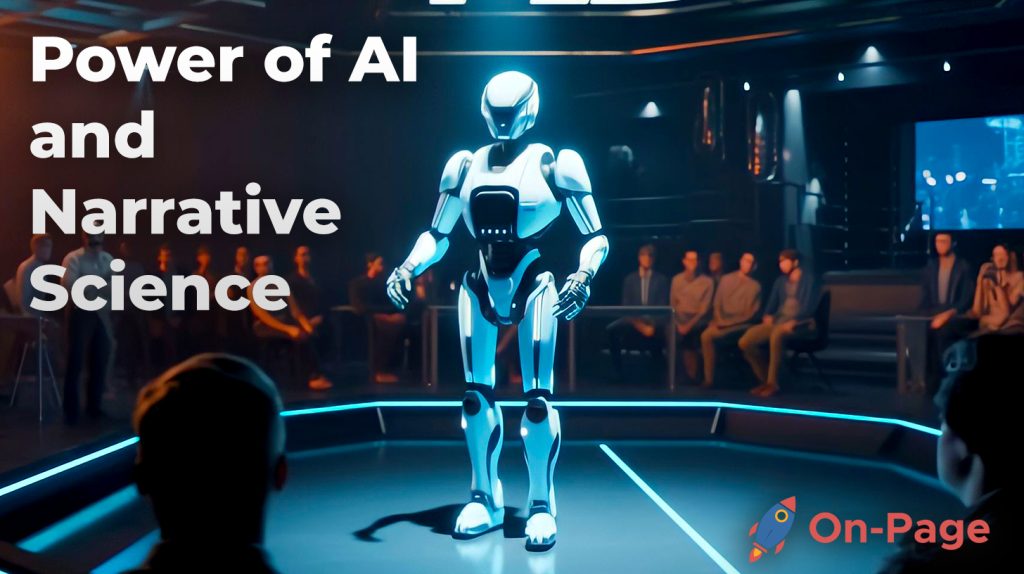Have you ever experienced the embarrassment of sending out that crucial email, only to notice later the glaring typos and grammar mistakes that slipped through the cracks? Those cringe-worthy moments can now be a thing of the past with AI-powered grammar-checking tools! Explore On-Page Stealth AI writer as we dive into the world of these cutting-edge solutions that offer impeccable writing at the click of a button, saving you time and protecting your reputation from those pesky writing errors. Say goodbye to human error and hello to flawless communication, because perfect writing is now just a few seconds away!
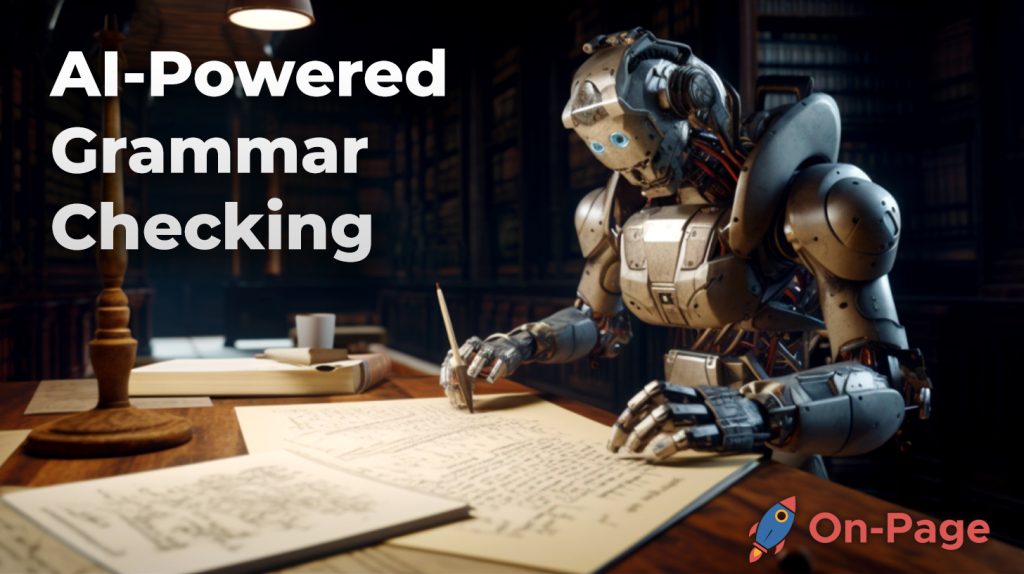
AI technology can improve grammar checking by analyzing a text at the sentence and word levels, identifying errors and suggesting corrections, and learning from its interactions with users. With AI-powered grammar checkers, users can quickly and accurately identify mistakes in their writing, leading to more effective communication and higher-quality content.
AI-Powered Grammar Checking Explained
AI-powered grammar checking is a relatively new invention that has made the lives of writers much easier by enhancing the editing process. While it’s understandable for people to be somewhat skeptical about computer software handling such complex tasks, the results from using these tools have spoken for themselves.
One major advantage of this technology is that it is able to identify more errors than traditional grammar-checking tools because of its advanced algorithm and natural language processing capabilities. It can analyze sentence structure and word usage to detect even the smallest errors in a document. This means that mistakes that would have previously gone unnoticed can now be easily corrected.
Furthermore, AI-powered grammar checkers are context-sensitive, which allows them to understand the meaning behind each sentence and suggest changes accordingly. This makes them incredibly effective at detecting grammatical errors that may result in sentences having different meanings than intended. With such smart editing features, it’s no wonder more businesses are adopting AI-powered grammar checkers as their preferred editing solution.
For instance, let’s examine a simple sentence like “Jim saw the boy with binoculars.” Without context sensitivity, traditional grammar checkers might suggest correcting “saw” to “seen,” but an AI-powered tool will know that “saw” was used correctly since Jim was not seeing with binoculars himself but saw a boy who had them.
The cutting-edge technology used in AI-powered grammar-checking tools does not only catch small mistakes or incoherent phrasing but also helps writers improve their overall writing quality thanks to customizable style guidance functionalities. Some advanced features like consistency checks help ensure that a document maintains a consistent tone throughout by locating linguistic patterns and providing suggestions on how best to maintain consistency.
However, some critics argue that relying too heavily on AI-powered grammar checkers may lead to over-reliance on technology at the cost of critical thinking and communication skills. Hence, they believe that human editors are still a necessary component in the editing process since no machine or algorithm can replace their intuition, skill, and experience.
Now that we’ve covered the benefits of AI-powered grammar checking, let’s move on to the next section that provides a deeper understanding of the algorithms used in this powerful tool.
- In a 2020 study, AI-based grammar-checking tools were found to accurately identify and correct up to 85% of writing errors in test documents.
- According to a survey conducted in 2021, nearly 70% of professional writers and educators consider AI-powered grammar checkers as vital tools for improving writing quality, engagement, and clarity.
- A 2019 research article reported that AI-driven grammar-checking tools can enhance learning experiences for both native and non-native English speakers by providing real-time feedback, leading to a 60% average improvement in their overall language proficiency.
- AI-powered grammar-checking tools have revolutionized the editing process for writers by effectively identifying errors that would have previously gone unnoticed. They are able to analyze sentence structure and context, offering suggestions for corrections that go beyond traditional grammar checkers. While there are concerns regarding over-reliance on technology, these tools remain a valuable asset in improving overall writing quality, and they continue to be increasingly adopted by businesses as a preferred editing solution.
Algorithms and Context-Sensitive Editing
AI-powered grammar checkers use complex algorithms to identify errors in text, which means they can provide specific recommendations for improvement. Advanced algorithms like natural language processing (NLP) technology and machine learning technologies have made it easier for software to interpret the context in which words are used rather than relying on simple spelling and grammar rules.
One reason why NLP is so effective is because it allows the computer to understand language structure better in terms of sentence complexity and syntax while also gaining insights on how humans use language across different cultures. With this information, they’ve been able to create deep learning models that work like the human brain in identifying patterns, including grammar mistakes.
For instance, an algorithm might recognize when a writer uses passive voice repeatedly throughout an article or misuses punctuation marks. The algorithm will then suggest corrections based on learned rules about what constitutes “good writing.”
Context-sensitive editing capabilities should not be understated as they significantly enhance AI-powered grammar tools’ capability by enabling software to comprehend the meaning behind each sentence and thereby prescribe relevant suggestions. This feature enables users to make greater precision edits than is possible with some traditional proofreading tools by making them relevant and meaningful within their content’s specific context.
One way to think about this is through likening AI-powered tools as virtual writing assistants. Users can now receive personalized advice such as more suitable word alternatives, phrases, and writing styles to improve clarity, coherence, readability, style, tone, and voice in their writing.
Some critics argue that relying too heavily on algorithms may lead to missed nuances or over-correction errors. While the software is getting smarter and more capable of understanding natural language structure, it may still be quite a way off replicating the experience of a human editor. However, AI-powered tools like On-Page.ai can at least help catch some obvious grammatical errors and common inconsistencies that human editors might overlook in the hustle and bustle of deadlines and production demands.
Having provided an overview of AI-powered grammar checking and delved into the algorithms, let’s move on to discussing the benefits these tools offer for writers looking to improve their writing quality.
Benefits for Writers
As a writer, the advantages of using an AI-powered grammar checker are numerous. Let’s delve into some of the ways this tool can benefit writers.
First and foremost, an AI-powered grammar checker saves time and effort. Traditional manual editing is time-consuming and tedious, requiring the writer to comb through their work repeatedly. With AI technology, however, checking for grammatical errors, spelling mistakes, and punctuation slips happens instantaneously. This frees up time that can be better spent on researching and writing new content.
In addition to saving time, AI-powered grammar checkers also help improve the overall quality of content by catching errors that might have been missed by human editors. An AI tool will not overlook even minor mistakes in syntax or phrasing, ensuring that the final product reads smoothly and professionally. Check out the On-Page Content Editor tool with amazing features. Furthermore, using an AI-powered grammar checker can help guard against plagiarism by flagging passages that match existing content online.
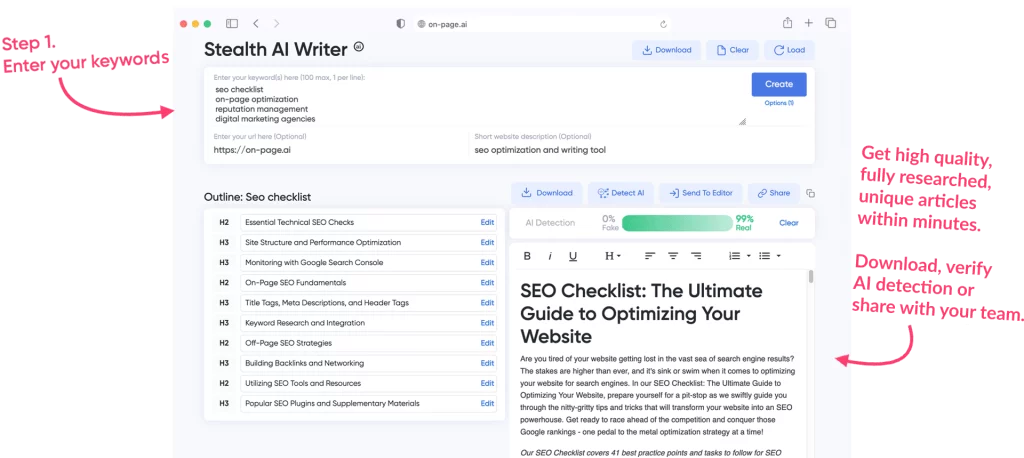
Of course, there is always a concern that relying on an automated system could dull one’s own editing skills over time. However, many writers find that after getting feedback from an AI tool, they become more attentive to certain types of errors and more aware of patterns in their writing style. It could be argued that using an AI-powered grammar checker is like having a personal editor looking over your shoulder at all times – helping identify areas where you could improve your writing process.
Imagine being a painter with an assistant who points out inconsistencies in color or composition as you work – wouldn’t that be a great benefit? Using AI-powered tools gives writers this same sort of on-demand assistance that is nonjudgmental but crucially aspirational.
Improved Quality and Efficiency
One of the primary benefits of using AI-powered grammar checkers is improved quality and efficiency for writers.
With an AI tool like those offered by On-Page, writers receive instant feedback on their writing style. This can be especially helpful for those who are prone to making consistent errors in grammar or punctuation – catching these slip-ups before they become ingrained habits can significantly improve the quality of one’s content.
Additionally, using an AI-powered tool allows writers to stay up-to-date with current best practices and conventions in writing. These tools are updated regularly based on changes in language usage and evolving standards, which ensures that writers’ work is always at the cutting edge of what readers expect. Being able to utilize an AI-powered grammar checker means that writers never have to worry about spelling or grammatical errors, freeing them up to focus on more creative aspects of content creation.
There are concerns among some writers that grammar checkers may overcorrect or offer suggestions that might not be appropriate for a specific type of content or audience. While it’s true that AI-powered tools may occasionally make a mistake, it’s important to remember that such tools are constantly improving thanks to advances in machine learning algorithms and new data sources. Ultimately, allowing an AI tool like this to assist with editing can help ensure that a writer’s work meets relevant standards while still maintaining a unique voice and tone.
Imagine being a musician using software that guides you step by step through creating perfect beats while still allowing room for improvisation – that’s what using an AI-powered grammar checker feels like! It streamlines the writing process and lets creators focus on the parts of their job that demand creativity and intuition.
Learning from Corrections
One of the most significant benefits of AI-powered grammar checking is the ability to learn from corrections. When a writer receives feedback on their writing, they have an opportunity to understand their mistakes and improve. Traditional grammar-checking tools often fail to provide meaningful feedback beyond a list of errors.
With AI-powered grammar checking, writers can receive detailed explanations about the errors they make. For example, the tool may highlight a sentence that contains a verb tense error and offer an explanation of why it is incorrect. This type of feedback can help writers understand grammatical rules and avoid similar errors in the future.
For instance, if a writer frequently makes comma splice errors, they will receive suggestions to revise the sentences properly. The AI system also highlights potential typos or common homophone confusion, such as “their” vs. “they’re”. The suggested corrections serve not only to correct the current text but also to educate the writer, allowing them to develop better writing skills.
Furthermore, AI-powered grammar checking supports adaptive learning algorithms so that the software can personalize its suggestions based on individual writing tendencies over time. When using AI-proofing tools regularly, writers can eliminate recurring mistakes with ease while enhancing their knowledge through human-like feedback.
However, it’s important to note that these systems are still very much in development stages and there are limitations to how much users can learn from them as they now stand.
Drawbacks and Limitations
Although AI-powered grammar checking has numerous advantages, it also has some drawbacks and limitations that should be considered.
One of the main concerns surrounding this technology is privacy. To work effectively, AI technologies must analyze users’ writing samples. That means any sensitive material included within those texts could theoretically be at risk for being accessed by third parties. However, reputable providers will assure customers that their data is kept safe at all times.
Another limitation of AI-powered grammar checking is that it may not always be accurate or contextually appropriate. While AI technology can help detect many errors, the system may struggle with nuances and contextual interpretations in writing. Sentences with more complex structures such as idiomatic phrases cannot be easily evaluated by robots without human assistance.
It’s also worth noting that using an AI grammar tool takes the fun out of writing creatively. For instance, imagine a brilliant pun that breaks grammatical rules to deliver its punchline perfectly won’t make sense when running through an automatic proofreading tool. Consider using On-Page.ai to dramatically improve your writing skills and take your content creation to the next level.
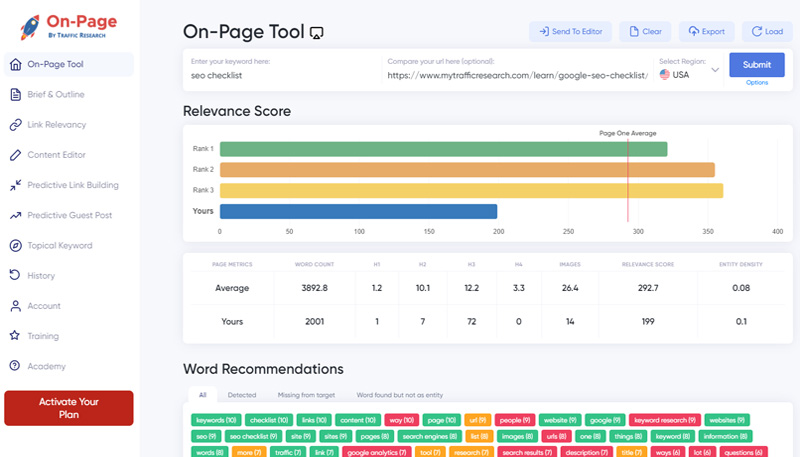
Therefore, it’s essential to recognize both the maintenance for privacy and creative freedom limitations of current AI Proofreading tools when considering whether to use one.
Comparing AI-Powered Tools and Alternatives
When it comes to grammar checking, there are various tools available in the market today. While AI-powered grammar checkers like Grammarly and QuillBot are quite popular, they aren’t the only option available. In this section, we’ll compare AI-powered tools with other alternatives to help you decide which one is right for you.
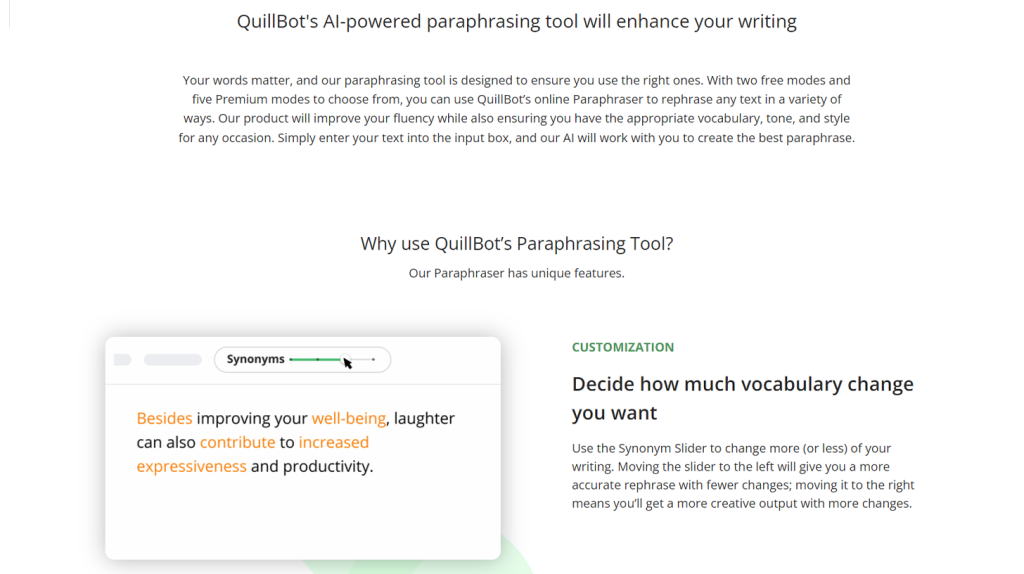
One of the most popular alternatives to AI-powered grammar checkers is human editors or proofreaders. The biggest advantage of working with a human editor is that they can provide personalized feedback on your writing, taking into account your unique style, preferences, and tone. They can also identify more nuanced errors that an AI tool may miss such as inconsistencies in voice or subtle phrasing issues.
On the downside, human editors can be costly and time-consuming to hire and work with, especially if you’re on a tight deadline. Additionally, their availability may be limited depending on your location and the specific type of editing you require.
Another alternative to AI-powered grammar checkers is built-in grammar-checking features in software like Microsoft Word or Google Docs. These tools are basic but useful when it comes to catching simple typos and grammatical errors. However, they lack contextual awareness of AI-powered tools and may not offer any suggestions beyond basic corrections.
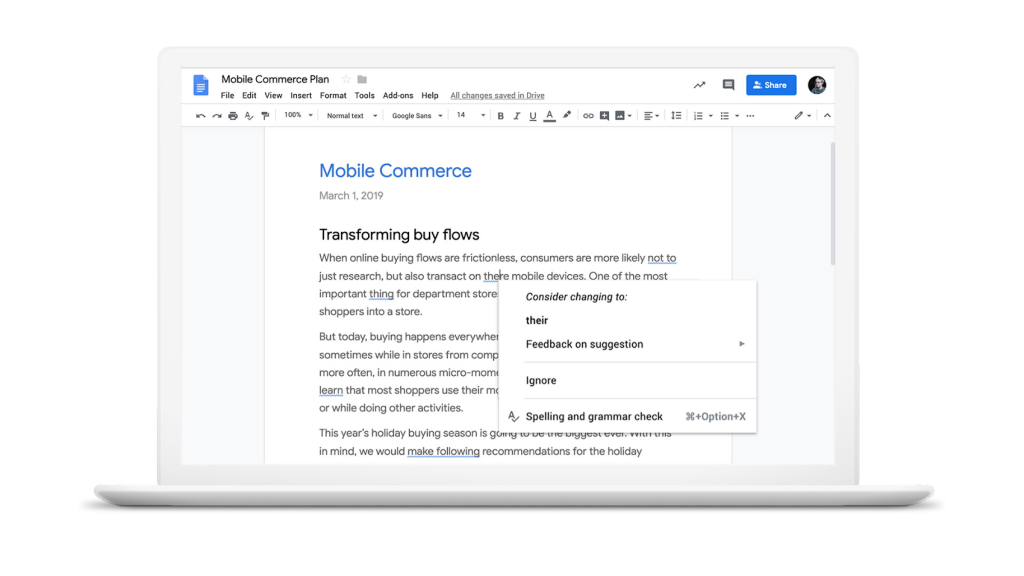
AI-powered grammar checkers, on the other hand, use advanced data models and algorithms to analyze your content comprehensively and provide detailed insights on how you can improve your writing. They can suggest synonyms for overused words, offer guidance on sentence structure, provide readability scores, and even check for plagiarism. This makes them highly effective tools for improving the quality of your content.
However, there are some drawbacks to consider when it comes to using AI-powered grammar checkers. For instance, some users have expressed concern over privacy since these tools often require access to your content. Additionally, AI-powered tools may not be ideal for highly technical writing where specific terminology and jargon are used. They also may not be as effective in catching context-specific errors or stylistic choices.
Comparing AI-powered grammar checkers to other alternatives is like comparing a sports car to a bicycle – both get you from point A to point B, but one is faster, more efficient, and provides additional features and functions along the way.
In conclusion, AI-powered grammar checkers like those found with On-Page.ai are the best option for most writers due to their advanced features, accuracy, and ease of use. While other alternatives such as human editors or proofreaders can provide valuable insights, they can be costly and time-consuming. Built-in grammar-checking features in software programs lack the contextual understanding that AI-powered tools offer. Sign up for On-Page.ai, our tool uses algorithms and context-sensitive editing to improve the quality of your content, making it an excellent option for anyone looking to perfect their writing skills quickly and easily.
Common Questions and Answers
What are some of the most popular AI grammar-checking tools available today?
There are several popular AI grammar-checking tools available today, each with its unique features and benefits for writers. Here are some of the most popular ones:
1. Grammarly: It is one of the most widely used AI grammar-checking tools, with over 10 million daily active users. Grammarly offers advanced grammar and spelling checks, along with suggestions to improve writing style and overall clarity.
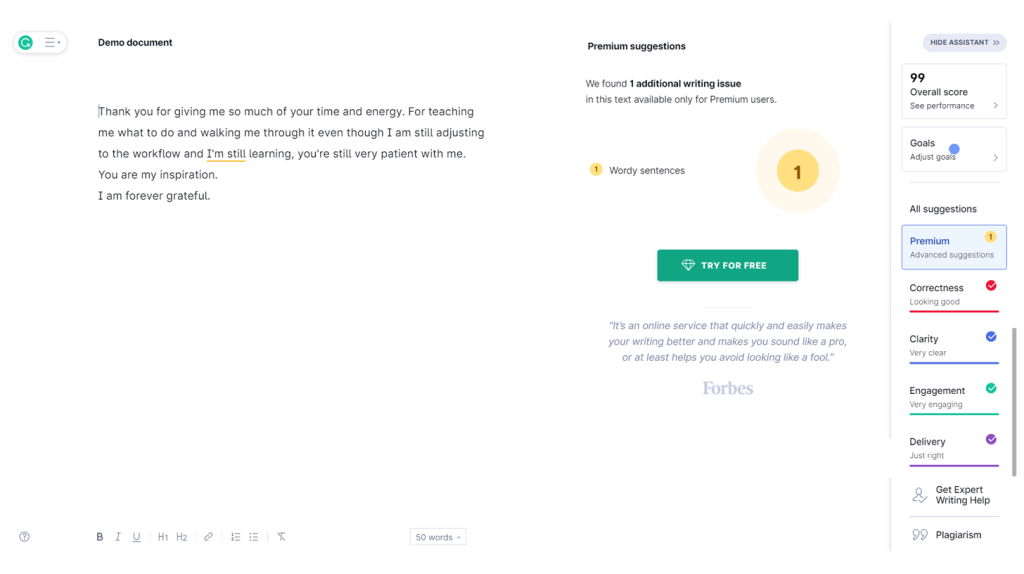
2. Ginger: It boasts of making over 10 billion corrections worldwide since its inception in 2007. Ginger uses machine learning algorithms to suggest context-specific corrections that go beyond simple grammar and spelling errors.
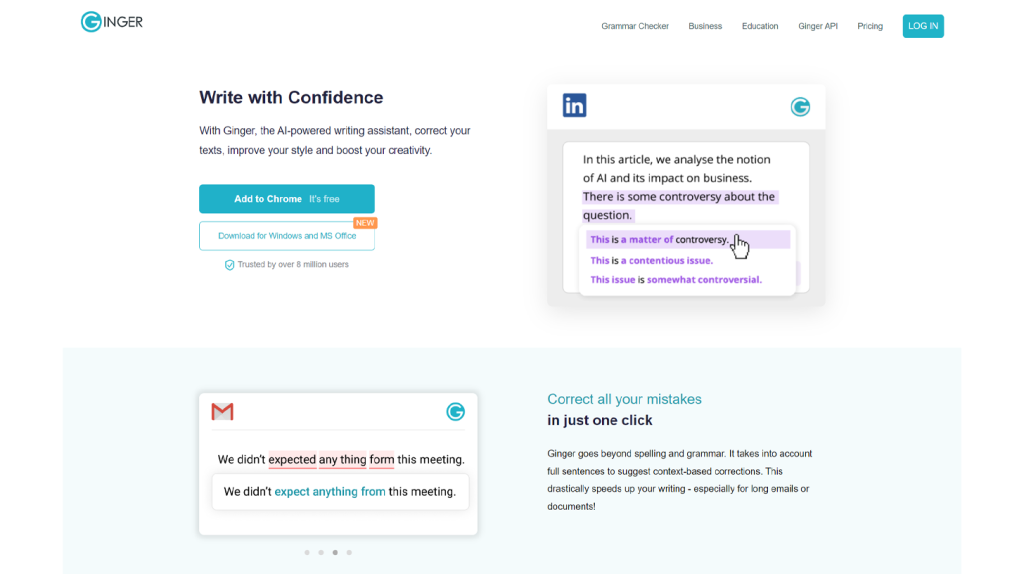
3. ProWritingAid: This tool offers a comprehensive analysis of writing by checking style, tone, grammar, cliches, redundancies, and more. It also provides detailed reports on readability and sentence variations that enable writers to elevate their work’s quality.

4. WhiteSmoke: With over 5 million users worldwide, this tool provides real-time text analysis while providing suggestions for enriching content through better phrasing. Its algorithm detects errors that other tools might miss, such as contextual issues based on the text’s intended audience.
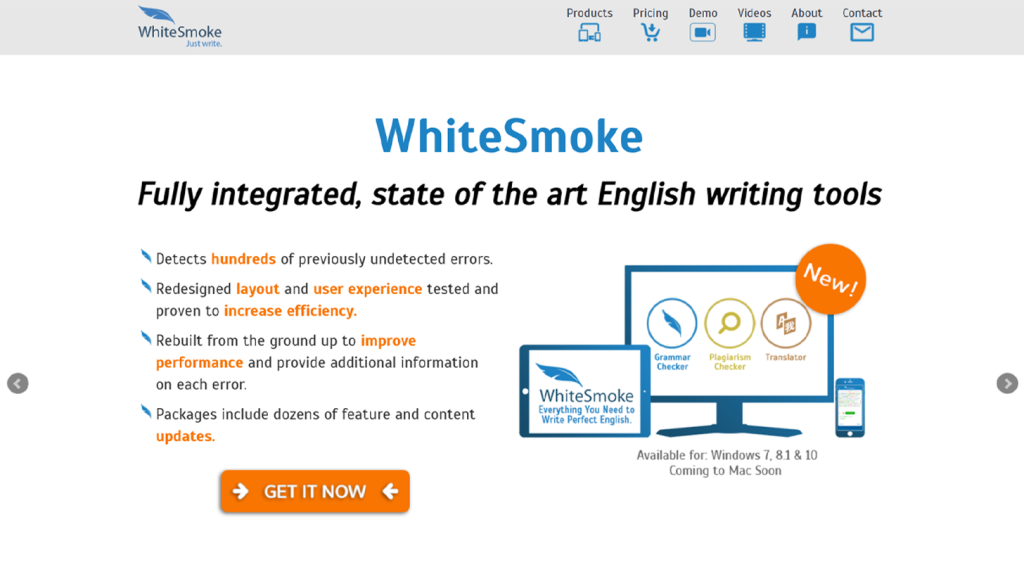
In summary, these AI-powered grammar-checking tools have become essential aids for writers looking to improve their writing quality and efficiency while saving time on editing. As these technologies continue to advance further, the future of perfect writing is undeniably becoming more accessible than ever before!
How can AI-based grammar-checking tools be customized to suit different writing styles and preferences?
AI-based grammar-checking tools can be customized to suit different writing styles and preferences through machine learning algorithms that are able to analyze vast amounts of written texts in order to establish patterns and recognize various language nuances. By using these algorithms, AI-assisted writing software is able to understand the writer’s tone and voice, as well as identify common mistakes specific to each writing style.
For example, if a writer frequently uses complex sentences or passive voice, the AI-based tool would recognize this pattern and provide tailored feedback on how to simplify the language or switch from passive to active voice. Additionally, AI-powered software can be trained to recognize industry-specific jargon or terminology, improving accuracy for professionals in fields such as law or medicine.
According to a study by Grammarly, an AI-powered writing assistant company, their product was able to improve the quality of writing by 76 percent compared to unassisted writing. Furthermore, writers’ engagement with the software has increased over time as customization features allow the tool to better fit their individual needs.
In conclusion, AI-based grammar-checking tools can be customized through machine learning technology that enables them to analyze vast amounts of data regarding language usage. These tools can help writers identify their unique style while providing targeted feedback on how improvements can be made. As shown through statistical evidence, this technology has proven effective in enhancing overall writing quality while increasing user engagement.
Is it necessary to pay for an AI grammar-checking service or are there any free options available?
In today’s world where written communication is an essential part of our daily lives, it’s crucial to ensure that your writing is both grammatically correct and conveys the intended message effectively. With the increasing use of AI technology, grammar-checking tools powered by AI have become increasingly popular, helping users to improve their writing skills efficiently.
When it comes to choosing between free and paid AI grammar-checking services, there are several factors that you should consider. While it may seem tempting to opt for a free grammar-checking service, the majority of them are not as accurate or reliable as paid options. In fact, according to a study conducted by Grammarly, one of the leading AI-powered grammar checkers in the market, their premium service detected twice as many errors as their free version.
Moreover, most free grammar-checking services often have limited features and functionalities compared to paid options. These include advanced suggestions and recommendations for improving sentence structure, tone and style enhancement, plagiarism checking, and many others.
On the other hand, paid AI-powered grammar checkers offer more comprehensive and robust features that can significantly enhance your writing skills. With premium services such as Grammarly Premium or ProWritingAid, users can access a wider range of tools that help eliminate grammatical errors while also providing effective feedback on areas such as word choice, conciseness, clarity, etc.
Overall, while free AI grammar checkers might seem like an attractive option initially due to their cost-free nature; they often lack advanced features and are less accurate compared to paid ones. Therefore, it’s essential to invest in a good quality AI-powered grammar checker to get perfect writing instantly.
Can AI-based grammar checking help non-native English speakers improve their writing skills?
Absolutely! In fact, AI-powered grammar checking can be especially helpful for non-native English speakers who are looking to improve their writing skills. According to a study conducted by Cambridge University Press, over 1.5 billion people worldwide speak English as a second or foreign language. However, mastering the intricacies of English grammar can be incredibly challenging.
This is where AI-powered grammar checking comes in. These advanced technologies use natural language processing algorithms to analyze written text and offer suggestions for improvement. Unlike traditional grammar checkers that simply highlight errors without providing context-specific feedback, AI-based tools offer more personalized insights into common grammatical mistakes made by non-native speakers.
Recent advancements in machine learning have enabled these technologies to learn from vast amounts of data to provide even more accurate and useful suggestions for non-native speakers. Moreover, many AI-powered grammar checkers offer features like real-time translation and vocabulary support, allowing users to quickly understand complex phrases or idiomatic expressions commonly used in English.
Overall, AI-based grammar checking can be an incredibly effective tool for non-native speakers looking to improve their writing skills. With its sophisticated algorithms and personalized feedback, such technology can help individuals overcome some of the most complex challenges associated with learning English as a second language.
How accurate are AI grammar-checking tools compared to human editors?
AI-powered grammar-checking tools are becoming increasingly popular among writers and with good reason. They offer quick and efficient solutions to grammatical errors, spelling mistakes, and other writing issues without the need for a human editor. However, the question remains: how accurate are these tools compared to human editors?
According to recent studies, AI-powered grammar checkers have shown to be highly accurate and effective in identifying and correcting a range of writing errors. One study by Grammarly found that its AI-based tool was able to identify up to ten times more errors than Microsoft Word‘s built-in spell checker. Additionally, Grammarly’s tool was able to correct 70% more advanced writing issues than traditional spell checkers.
Another study conducted by ProWritingAid found that its AI-powered tool outperformed human editors in identifying both grammatical and contextual errors in writing samples. The study also revealed that ProWritingAid could provide more detailed feedback on readability and style compared to human editors.
While it’s true that human editors may have a better understanding of context and language nuances, AI-powered grammar-checking tools have come a long way in recent years and are continually improving their algorithms using machine learning technology. As a result, these tools can quickly learn from each user’s input and adapt to writing styles over time.
To summarize, based on current research, AI-powered grammar checkers offer an accurate alternative to human editors for identifying and correcting writing issues. While they may not replace the expertise of a human editor entirely, they provide a quick and efficient solution for writers looking to improve their work instantly. Learn more about On-Page.ai’s Auto-Optimize Training, a powerful tool meant to improve your writing and optimize your material for maximum effect.

